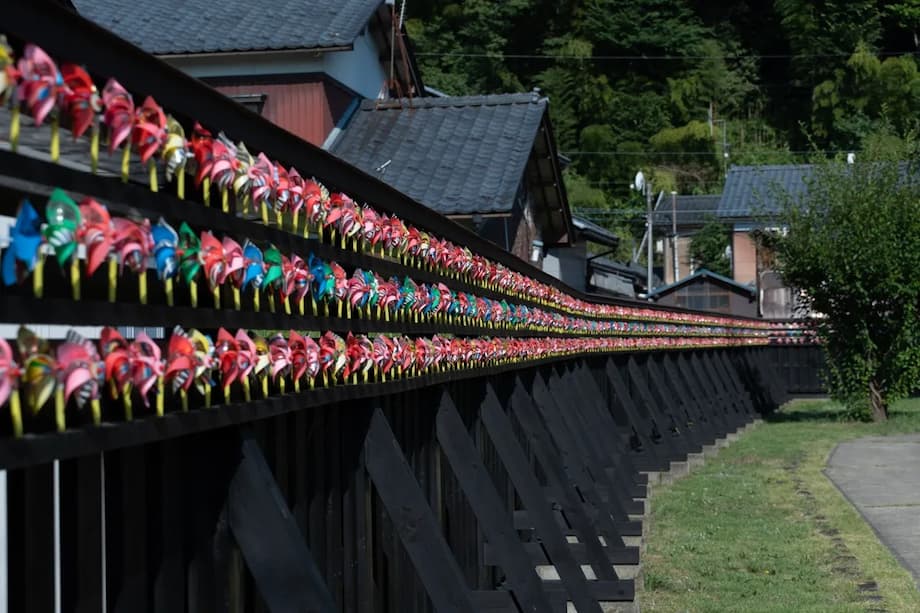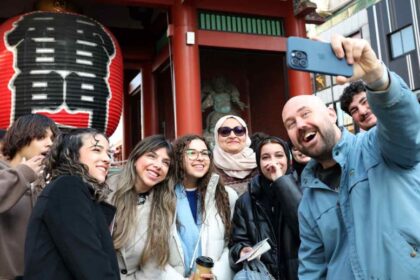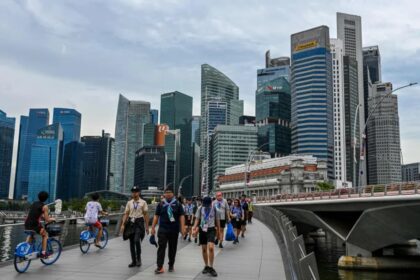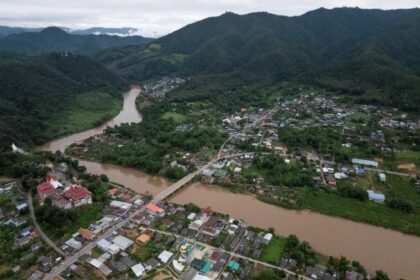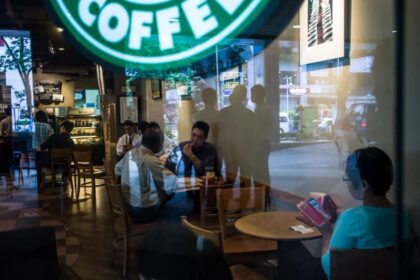Ono City’s Tourism Revival: Overcoming the 2025 Landslide
In the heart of Fukui Prefecture, Ono City is experiencing a remarkable resurgence as a tourist destination after a challenging period marked by a major landslide in March 2025. The landslide, which blocked Route 158—a vital artery connecting Ono to Gifu Prefecture—caused a sharp decline in visitor numbers and threatened the city’s economic stability. Now, with repairs completed and the route reopened, Ono is welcoming travelers once again, eager to showcase its blend of natural beauty, historical heritage, and unique local experiences.
Ono’s journey from disaster to recovery is emblematic of a broader trend in Japan, where communities leverage resilience, innovation, and local pride to rebuild and revitalize tourism after setbacks. This article explores how Ono City is reclaiming its place on the travel map, the attractions drawing visitors back, and the wider significance of its recovery for regional tourism in Japan.
What Makes Ono City Special?
Ono City, sometimes called “Little Kyoto” for its preserved Edo-period atmosphere, offers a distinctive experience for travelers seeking authenticity away from Japan’s more crowded destinations. The city’s centerpiece is Echizen-Ono Castle, often referred to as the “Castle in the Sky” for its ethereal appearance floating above morning mist. But Ono’s appeal extends beyond its iconic castle, encompassing historic streets, pristine spring water, and a vibrant local culture.
Echizen-Ono Castle: The ‘Castle in the Sky’
Perched atop a 250-meter hill, Echizen-Ono Castle is a reconstructed 20th-century version of a 16th-century fortress originally built by a retainer of the legendary warlord Oda Nobunaga. The current structure, rebuilt in 1968 with support from samurai descendants, is smaller than the original but no less captivating. When fog blankets the surrounding plain—most commonly from October to April at dawn—the castle appears to float above the clouds, creating a scene beloved by photographers and travelers alike.
Inside, the castle houses a museum featuring samurai artifacts and local history, while its observation deck offers panoramic views of the town and mountains. The “Castle in the Sky” phenomenon occurs about 10 to 20 times each season, rewarding early risers with a truly magical sight.
Beyond the castle, Ono’s historic townscape includes reconstructed samurai residences, a 400-year-old market street, and temple-lined avenues. The city’s off-the-beaten-path status means visitors can enjoy these attractions without the crowds found in more famous destinations.
Historic Streets and Local Flavors
Shichiken Street, Ono’s main shopping avenue, is a living testament to the city’s Edo-period roots. The street hosts a morning market where vendors sell local produce, crafts, and specialty foods. Among the unique treats is soy sauce gelato, made with locally brewed soy sauce—a flavor so popular it often sells out quickly. Other seasonal flavors, such as watermelon and plum, offer a refreshing taste of the region.
Ono’s culinary scene is deeply connected to its natural resources. The city is renowned for its crystal-clear spring water, particularly from the Oshozu Spring, which is recognized as one of Japan’s “100 Great Waters.” This pure water not only enhances the flavor of local dishes but also supports sake brewing and tofu production, both of which are celebrated in the area.
Seasonal Attractions and New Experiences
Ono’s appeal shifts with the seasons. In spring and summer, the city’s waterways are adorned with displays of 2,000 colorful pinwheels, creating a festive atmosphere. Autumn brings vibrant foliage, while winter’s snow transforms the landscape into a serene wonderland. Recently, a hands-on paleontology attraction has opened, inviting visitors to explore the region’s prehistoric past and engage with interactive exhibits.
Other notable sites include the reconstructed residence of Matazaemon Tamura, a chief samurai retainer, and the simple yet poignant grave of feudal lord Yoshikage Asakura. The Hongan-Shozu Itoyo Fish Habitat, though not always open to visitors, highlights Ono’s commitment to environmental preservation and biodiversity.
How Did the 2025 Landslide Impact Ono’s Tourism?
The March 2025 landslide was a significant blow to Ono’s tourism industry. Route 158, the main road linking Ono to Gifu Prefecture and the wider Hokuriku region, was rendered impassable for months. This disruption not only deterred tourists but also affected local businesses, from inns and restaurants to souvenir shops and tour operators.
For a city that relies heavily on visitors drawn by its historical sites and natural beauty, the closure of a key transportation route posed existential challenges. Local officials, business owners, and residents faced uncertainty as visitor numbers plummeted and the economic ripple effects spread throughout the community.
Community Response and Recovery Efforts
Ono’s recovery was driven by a combination of government support, community resilience, and innovative tourism strategies. Repair crews worked tirelessly to clear debris and restore Route 158, while local leaders launched campaigns to reassure potential visitors of the city’s safety and accessibility.
Academic institutions, such as Kanazawa University, played a role in documenting the recovery process and promoting regional revitalization. Field surveys and collaborative projects helped preserve local dialects, record community experiences, and develop new tourism initiatives. These efforts were complemented by broader regional campaigns encouraging sustainable travel and support for local businesses.
Ono’s experience mirrors the concept of “reconstruction tourism,” a practice gaining traction in Japan following disasters such as the 2011 Tohoku earthquake and tsunami. Reconstruction tourism invites visitors to witness recovery efforts firsthand, learn about local resilience, and contribute to economic revitalization by supporting affected communities.
Why Is Ono’s Recovery Important for Regional Tourism?
Ono’s revival is significant not only for the city itself but also for the broader Hokuriku region and Japan’s approach to sustainable tourism. The Hokuriku region—which includes Fukui, Ishikawa, Toyama, and Niigata prefectures—has long been overshadowed by more famous destinations like Tokyo and Kyoto. However, improved transportation links, such as the Shinkansen and rapid trains, are making the region more accessible than ever.
National Geographic describes Hokuriku as an “under-visited gem,” offering authentic Japanese experiences, seasonal cuisine, and traditional crafts. By recovering from setbacks and promoting its unique attractions, Ono contributes to a more balanced distribution of tourism across Japan, alleviating pressure on overtouristed areas and supporting local economies.
Sustainable and Authentic Travel Experiences
Travelers to Ono can enjoy a slower pace and deeper engagement with local culture. Accommodation options range from traditional inns to boutique guesthouses, while activities include temple visits, sake tastings, and hands-on workshops. The city’s commitment to sustainability is evident in its preservation of historic sites, promotion of local foods, and environmental initiatives.
Visitors are encouraged to support local businesses, participate in community events, and respect the rhythms of daily life. Early opening hours, a no-tipping culture, and an emphasis on hospitality create a welcoming atmosphere for domestic and international tourists alike.
What Can Visitors Expect in Ono Today?
With Route 158 reopened and the city’s attractions fully accessible, Ono is once again ready to welcome travelers. The best time to witness the “Castle in the Sky” effect is from October to April, especially at dawn. However, each season offers its own charms, from cherry blossoms and pinwheel displays in spring to snow-covered landscapes in winter.
Practical travel information is readily available, with regular buses and trains connecting Ono to Fukui City and other regional hubs. While the town remains free from large tourist crowds, English signage and friendly locals make navigation easy for first-time visitors. The city’s relaxed pace allows for a full day of exploration, with enough sites and experiences to satisfy history buffs, nature lovers, and food enthusiasts alike.
Highlights for First-Time Visitors
- Climb to Echizen-Ono Castle for panoramic views and a chance to see the “Castle in the Sky.”
- Stroll along Shichiken Street, sampling local treats and browsing traditional shops.
- Visit the Oshozu Spring for a taste of Japan’s purest water.
- Explore reconstructed samurai residences and temple-lined streets.
- Participate in seasonal events and hands-on workshops, such as paleontology exhibits or sake tastings.
For those seeking an off-the-beaten-path destination that combines history, nature, and community spirit, Ono offers a rewarding alternative to Japan’s more crowded tourist spots.
Lessons from Ono: Resilience and the Future of Regional Tourism
Ono City’s recovery from the 2025 landslide demonstrates the power of community resilience, strategic planning, and the enduring appeal of authentic travel experiences. By investing in infrastructure repairs, promoting local culture, and embracing sustainable tourism practices, Ono has not only bounced back but also set an example for other regions facing similar challenges.
The concept of reconstruction tourism—where visitors engage with communities recovering from disaster—has proven effective in fostering economic revitalization and cultural exchange. In Ono, as in Tohoku and other parts of Japan, this approach helps preserve local traditions, support small businesses, and educate travelers about the realities of disaster recovery.
As Japan continues to balance the demands of tourism growth with the need for sustainability and regional revitalization, cities like Ono will play a crucial role in shaping the future of travel. Their stories of resilience, innovation, and hospitality offer valuable lessons for destinations worldwide.
In Summary
- Ono City in Fukui Prefecture has successfully revived its tourism industry after a major landslide in March 2025 blocked a key access route.
- The city is renowned for Echizen-Ono Castle, known as the “Castle in the Sky,” as well as its historic streets, pure spring water, and unique local foods.
- Community resilience, government support, and innovative tourism strategies were key to Ono’s recovery.
- Ono’s revival contributes to sustainable tourism and regional revitalization in the Hokuriku region, offering authentic experiences away from Japan’s crowded hotspots.
- Travelers can now enjoy Ono’s attractions year-round, with improved accessibility and a welcoming atmosphere for visitors seeking history, nature, and local culture.


